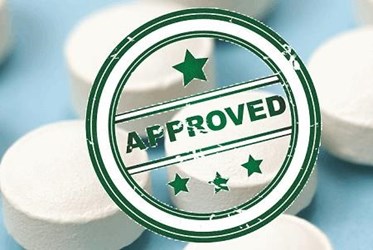How To Ace Your FDA IND Submission (And How To Rebound If You Don't)

By Michelle Rose, Ph.D., and Amanda Ceres, Halloran Consulting Group
Whether you read Part 1 of this three-part series — and sought pre-IND (Investigational New Drug) feedback from the FDA — or not, let's assume you have your pre-IND ducks in a row. Now you're ready to embark on preparing and submitting the IND application to the FDA, which, if approved, will allow you to test your drug in humans for the first time. Please note that the focus of this article will be on the FDA IND, not similar applications used to gain approval in countries outside the United States.
In the U.S., federal law indicates that a drug must be the subject of an approved marketing application before it is transported or distributed across state lines. Therefore, to ship an investigational drug to clinical investigators in another state, you must obtain an exemption from this legal requirement. The IND is the means through which you obtain this exemption from the FDA.
Most folks prepare and submit IND applications to initiate clinical investigations of a new drug or biologic, but an IND application is also required for a change to an existing approved drug or biologic. This includes new indications, significant labeling changes, dosage forms and scheduling, routes of administration, or patient populations (e.g., pediatric, gender).
Casting aside the technical jargon and interpreting the regulations in 21 CFR 312, what does the road ahead of you really look like?
It is worth stating up front that the FDA has one primary goal in mind as they review INDs: to protect the health and safety of human test subjects. At the end of the day, your buttoned-up application needs to convey that you share this goal. Keep reading for a roadmap on how to accomplish this task.
Preparing The IND
Before IND submission (and even the pre-IND meeting), you should assess whether the preclinical development data demonstrates that your drug is reasonably safe for initial use in humans. You should also aim to determine if the compound exhibits pharmacological activity to justify commercial development. Although an IND may be submitted solely to conduct research on an investigational new drug in humans, most INDs are submitted with the goal of commercial drug development. When your product is identified as a viable candidate for further development, you should then focus on collecting the data and information necessary to establish that the product will not expose humans to unreasonable risks when used in limited, early-stage clinical studies. Once this data has been generated (or in parallel to your animal studies wrapping up) and the reports written, you can begin to prepare the IND.
The time needed to prepare an IND will depend on the availability of product characterization information, nonclinical data, and available clinical data. Many first-time applicants underestimate the time it takes to prepare and submit a well-designed, well-executed IND. From the time you have a legitimate clinical candidate, it can take up to two years (or even longer) to gather sufficient information and submit the IND to the FDA. Ideally, you should study the relevant FDA instructions and forms for an IND submission, which can be found on the FDA's website, and determine how your organization can best meet those requirements for your product.
In a nutshell, the IND application must contain information in three broad categories:
- Animal Pharmacology & Toxicology Studies – Preclinical data should demonstrate that the product is reasonably safe for initial testing in humans.
- Manufacturing Information – Information about the composition, manufacturer, stability, and controls used for manufacturing the drug substance and the drug product needs to show that you can adequately produce and supply consistent batches of the drug.
- Clinical Protocols & Investigator Information – Detailed protocols for proposed clinical studies should prove that the initial-phase trials will not expose subjects to unnecessary risks. Also, information on the qualification of clinical investigators (professionals, generally physicians) who oversee the administration of the experimental compound should demonstrate that they are qualified to fulfill their clinical trial duties. Finally, commitments to obtain informed consent from the research subjects, have the study evaluated by an institutional review board (IRB), and adhere to the investigational new drug regulations are required.
What Happens After The IND Submission
Once the IND is submitted, the regulatory project manager (RPM) at the FDA receives the application and serves as the regulatory contact, obtains the review team assignments, and routes the IND to the review team. The review team typically consists of a chemist, a pharmacologist/toxicologist, a clinician, a statistician, a pharmacokineticist, and, if a product includes a device, consulting reviewers from the Center for Devices and Radiological Health (CDRH).
Upon FDA receipt of the IND submission, the sponsor must wait 30 calendar days before initiating any clinical trials. During this time, the FDA has an opportunity to review the IND for safety to assure that research subjects will not be subjected to unreasonable risk. It is advisable that you make your IND working team available for any discussion during these 30 days. The FDA may request additional information or clarification of details contained in your IND application that you should aim to resolve in a timely fashion.
Assuming you’ve received notification from the FDA that it’s safe to proceed with your planned clinical study (this is typically received via phone or email and subsequently followed by an official “safe to proceed” letter), your IND is now considered “active.”
Responding To A Clinical Hold Order
On the flipside, if you aren’t so lucky and the FDA informs you that your IND is on clinical hold, you need to resolve and have the hold removed before you can proceed with your planned clinical study.
FDA typically communicates a clinical hold by telephone, followed by a detailed letter (citing the deficiencies) within 30 days. Clinical holds often result from issues previously discussed during the pre-IND meeting/feedback, but they could also result from poorly organized and/or insufficient IND submissions. These insufficiencies could include things like:
- Inadequate information to demonstrate safety
- Unqualified impurities in clinical batch or poorly defined impurity profile
- Poorly characterized master or working cell bank or viral bank
- Drug product not stable throughout the testing program
- The no observed adverse effect level (NOAEL) not determined in toxicology studies
- Maximum human dose not supported by nonclinical data
- Clinical protocol design does not meet stated objectives
- Clinical study design lacks needed safety monitoring, and/or stopping rules are not well defined or are inadequate
A clinical hold could even result from something like failing to include a statement of investigator (FDA Form 1572), which is a required (though seemingly insignificant) element of the IND package.
To have the FDA remove the clinical hold, you must address the cited deficiencies and prepare and submit a written complete response. Once the complete response to all of the clinical hold deficiencies has been received, the FDA will review the submission within 30 calendar days and determine whether the complete response to the clinical hold satisfactorily addresses the issues. You cannot initiate the planned clinical study until the FDA (usually the division director or their designee) has notified you that the study may proceed.
Updating The IND
In either scenario, as soon as your IND is in “active” status, it becomes a living document. As the sponsor, you are responsible for updating the IND over time to include study data, new protocols, protocol amendments, safety reports, new technical information, new efficacy data, and other relevant information. The majority of these updates are done via IND amendments falling under the following general categories:
- Protocol amendment (21 CFR 312.30)
- Information amendment (21 CFR 312.31)
- Safety report (21 CFR 312.32)
- Annual report (21 CFR 312.33)
- Response to FDA request for information
Best Practices For IND Success
And now, some helpful hints to increase your chances of a smooth FDA review of your application and a successful IND overall:
- Start the drug development program with the end product in mind.
- Plan the timing of a pre-IND meeting so that sufficient data is available to inform decisions; don’t ignore the feedback.
- Design the clinical plan to be adequately supported by the nonclinical data.
- Build a strong relationship with the FDA to enhance the success of the project.
- Create a reviewer-friendly submission; don’t make the FDA dig to find information that might be buried in your application.
- Be transparent and forthcoming about potential issues of concern as they arise during/after regulatory review, as they can impact credibility.
Remember that the preparation and submission of an IND is a significant step in drug development — and one that shouldn’t be taken lightly. For small companies, this may very well be the first time they interact with the FDA, and the first time the FDA is exposed to them. If this is the case, then first impressions do matter, as this will be the beginning of many interactions between the sponsor and the FDA leading up to approval of a marketing application.
Once the IND is active, both the sponsor and clinical investigators assume a whole host of responsibilities and face many statutory and regulatory requirements. If these duties and requirements are not met, the consequences can be quite significant and can lead to termination of an IND or the disqualification of a clinical investigator. Therefore, thoughtful (and early) planning and preparation is crucial for a successful IND submission and execution of the clinical study.
Tune in for part 3 of this series, which will provide more tips and hints on having positive interactions with the agency.
About The Authors:
 Michelle Rose, Ph.D., is a principal consultant with Halloran Consulting Group. She has more than 16 years of experience in regulatory affairs in the pharmaceutical and biotech industry in all phases of the drug development process, from discovery through clinical research to licensing. Michelle has extensive experience with the complicated regulatory topics including fast track development, accelerated approval, special protocol assessments, breakthrough therapy, and new drug application (NDA) approval under the FDA Animal Efficacy Rule. Prior to joining Halloran, she served as VP of regulatory affairs for Chimerix, where she built the regulatory affairs and operations functions. Michelle earned her B.S. in biochemistry from Case Western Reserve University and her Ph.D. in toxicology from the University of North Carolina at Chapel Hill.
Michelle Rose, Ph.D., is a principal consultant with Halloran Consulting Group. She has more than 16 years of experience in regulatory affairs in the pharmaceutical and biotech industry in all phases of the drug development process, from discovery through clinical research to licensing. Michelle has extensive experience with the complicated regulatory topics including fast track development, accelerated approval, special protocol assessments, breakthrough therapy, and new drug application (NDA) approval under the FDA Animal Efficacy Rule. Prior to joining Halloran, she served as VP of regulatory affairs for Chimerix, where she built the regulatory affairs and operations functions. Michelle earned her B.S. in biochemistry from Case Western Reserve University and her Ph.D. in toxicology from the University of North Carolina at Chapel Hill.
 Amanda Ceres is a senior consultant at Halloran. She has more than 14 years of experience in the pharmaceutical industry, 11 of those in regulatory affairs, with a diverse background in global regulatory affairs strategy that includes both small molecules and biologics at various stages of development. Prior to joining Halloran, Mandy spent six years at Celgene, where she developed and implemented global regulatory strategy and contingencies for inflammation and immunology programs, for which she was the global regulatory lead. She earned her B.S. in biology from Clarkson University and an M.S. in drug regulatory affairs and health policy from Massachusetts College of Pharmacy and Health Sciences.
Amanda Ceres is a senior consultant at Halloran. She has more than 14 years of experience in the pharmaceutical industry, 11 of those in regulatory affairs, with a diverse background in global regulatory affairs strategy that includes both small molecules and biologics at various stages of development. Prior to joining Halloran, Mandy spent six years at Celgene, where she developed and implemented global regulatory strategy and contingencies for inflammation and immunology programs, for which she was the global regulatory lead. She earned her B.S. in biology from Clarkson University and an M.S. in drug regulatory affairs and health policy from Massachusetts College of Pharmacy and Health Sciences.
